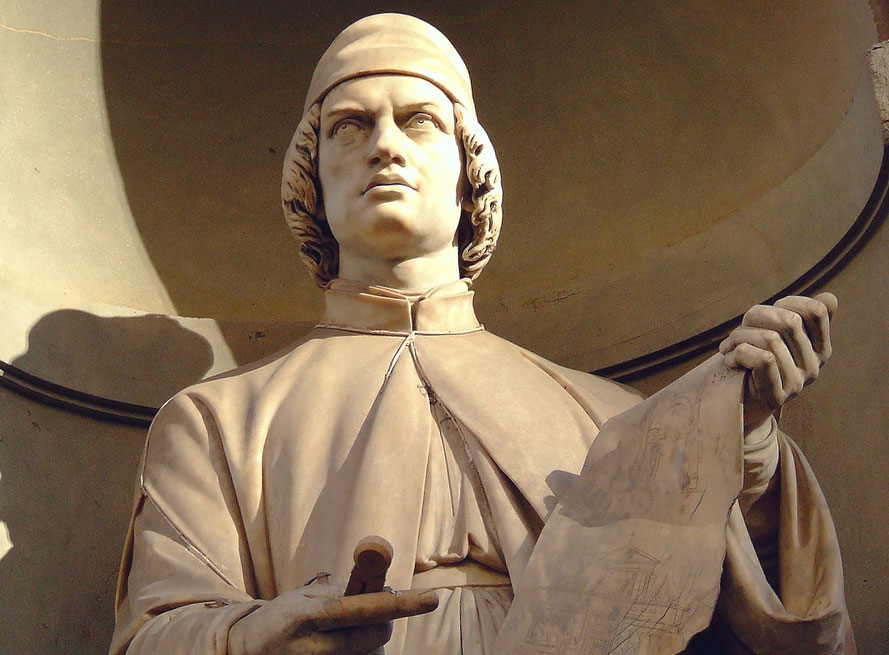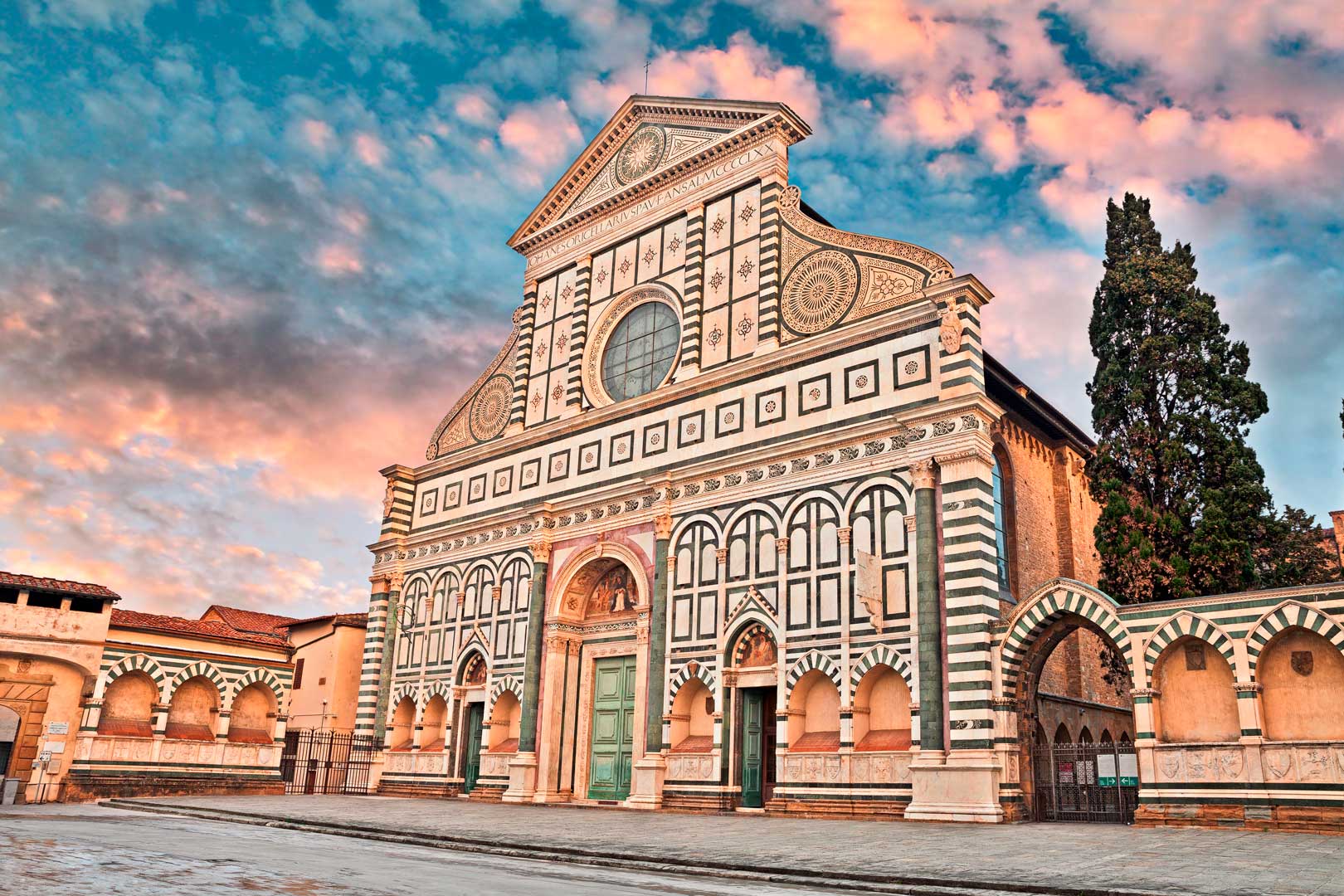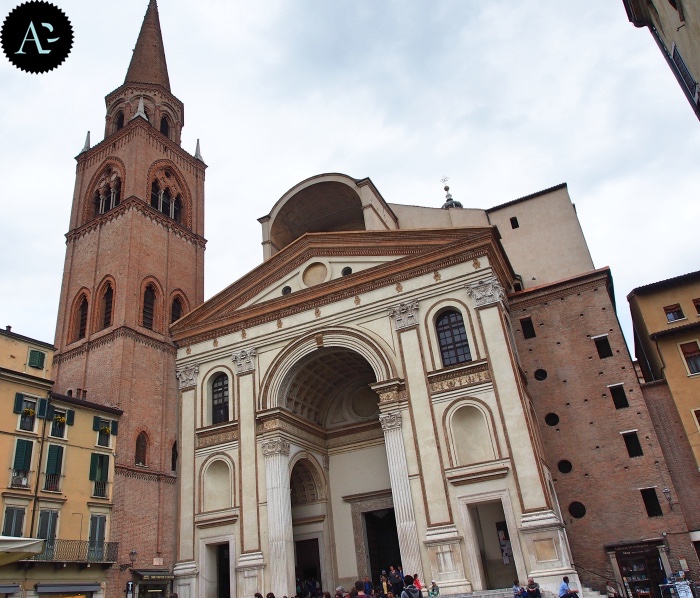
Leon Battista Alberti, one of the most multifaceted figures of the Italian Renaissance, was a pioneer of architecture, art and literature. Born in Genoa in 1404 and raised in a Florentine family, Alberti lived and worked in several Italian cities, including Rome, Florence, Rimini and Mantua. His career is an extraordinary example of a Renaissance man who, by applying himself to different disciplines, created works that defy time.
LEON BATTISTA ALBERTI AND RENAISSANCE ARCHITECTURE

La facciata di Santa Maria Novella a Firenze
Leon Battista Alberti’s life took place in various cities, mainly between Rome, Florence, Rimini and Mantua, where the artist stayed for study and work, developing his knowledge in the fields of architecture, literature, poetry, mathematics and astronomy.
Leon Battista Alberti was born in Genoa in 1404, of Florentine parents. He studied in Venice, Padua and Bologna and embarked on a career as an ecclesiastic, which allowed him to move to Rome and deepen his study of art and classical culture.
LEON BATTISTA ALBERTI IN FLORENCE
From 1434 Leon Battista Alberti settled in Florence and here began his activity as a treatise writer and architect, which over the years would see him active in various cities. In Florence, he became part of the cultured milieu of mathematicians and diamonds of the arts such as the Medici family, immersing himself in the heart of humanistic culture, in addition to the possibility of frequenting the major artists of the time, including Paolo Uccello, author of the Battle of San Romano, Luca della Robbia, Donatello, Ghiberti, famous for the Gate of Paradise, and Brunelleschi, author of the famous Dome of Santa Maria del Fiore.
With such friends, discussions were certainly a constant inspiration and Leon Battista Alberti dedicated his ‘De Pictura’ to his friend Brunelleschi, which forms part of the group of his main treatises on art.
THE LITERARY WORKS AND TREATISES OF LEON BATTISTA ALBERTI
Leon Battista Alberti was an artist but also something else and in fact he was the author of literary texts of various kinds and it is through reading the pages of his literary works that we can understand his thinking. In fact, if we read his ‘Momus’, we find ourselves before a satirical text (composed around 1450) steeped in pessimism regarding human nature. The man described by Leon Battista Alberti is not the author of his own destiny, as the leading humanists of the time preached, but a traitor and a false being, equipped with a mask that he never removes.
In a way, Leon Battista Alberti gives us back a secret side of Renaissance culture, and in the end, it is also thanks to his treatises that we can understand the pioneering force of this artist, who inaugurated a new way of doing architecture, initiating a predominantly theoretical architectural activity.
In his treatises, in fact, he elaborates his own reflections on architecture and art, almost like a scientist providing a method to give new shape to the world.
LEON BATTISTA ALBERTI ARCHITECT
Leon Battista Alberti’s first important architectural work was in Rimini, where he had the opportunity to work for a prestigious client: Sigismondo Pandolfo Malatesta, lord of the city, who entrusted him with the task of building a mausoleum by transforming the ancient medieval church of San Francesco.
However, almost all of Leon Battista Alberti’s works are to be found in Florence, where he worked for the wealthy merchant Giovanni Rucellai, who commissioned him to realise the noble family palace (Palazzo Rucellai), the Rucellai chapel at San Pancrazio and the façade of the church of Santa Maria Novella.
Leon Battista Alberti was also called to Mantua by Ludovico Gonzaga and here he designed two important religious buildings: the church of San Sebastiano and the church of Sant’Andrea, one of the must-see works of art in Mantua. These two monumental churches were part of the urban planning programme of the lord of Mantua, who wanted to give prestige to the city that was chosen as the seat of the council convened by Pope Pius II.

La facciata della Chiesa Sant’Andrea a Mantova
Leon Battista Alberti è un simbolo dell’ingegno rinascimentale, un pioniere che ha saputo intrecciare le arti e le scienze, trasformando la visione del mondo attraverso le sue opere. Le sue innovazioni architettoniche, i suoi trattati letterari e la sua partecipazione attiva nella vita culturale delle città italiane testimoniano la sua capacità di sintetizzare conoscenze diverse in un’armonia creativa. Dai capolavori architettonici di Firenze alle profonde riflessioni letterarie, Alberti ci ha lasciato un’eredità che continua a ispirare a secoli di distanza.
Studiare e ammirare le sue opere non è solo un viaggio nel passato, ma anche un invito a comprendere e apprezzare la complessità e la bellezza della cultura umanistica. In ogni pietra scolpita e in ogni parola scritta, Alberti ci ricorda il potenziale illimitato della mente umana e la sua capacità di plasmare il mondo.

